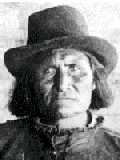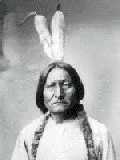Pawnee War of 1859
As written in 1882, using terminology in use then.
The problem started near the end of June when a half dozen Pawnee robbed a settler that lived north of the community known as Fontenelle.* A dozen settlers joined to retaliate but failing to locate the raiding natives, returned to Fontenelle. Two days later, several settlers from West Point and Dewitt arrived after fleeing their homes. They reported that the Pawnee were traveling up the Elkhorn River, robbing anyone along he way.
The twelve vigilantes quickly turned into 30 as they headed out in search of the raiding party. They were able to entice a dozen of the Pawnee to raid a log cabin with the intent to trap them in an ambush. Only two were killed and one injured, the rest escaping but now knowing they could not continue without a battle.
The vigilante party started to return the wounded Pawnee to Fontenelle but he was killed while attempting to escape along the way. Upon arrival back at Fontenelle, the new territorial governor Black was informed of the native problem. He issued orders to the militia to be ready to move while others gathered in readiness. When 200 gathered at Fontenelle, they planned to cross the Elkhorn River, follow the natives and attack on sight.
After a week of tracking, the militia came across the Indian lodge of "Jim Dick," an under-chief of the Omahas. He reported that the Pawnee were now joined by the Ponca and the Omaha, and that they now numbered at least 5,000. Additionally, that they were camped just seven or eight miles further on. For the first time, this militia of 200 had to contemplate the possibility of being outnumbered, their chapter in history to soon be written in final form.
The threat of an uprising reversing all the progress the settlers had accomplished helped the decision to continue. The group camped after traveling a couple miles closer, the idea to start out at 3 o'clock in the morning in order to sneak up on the Indian camp at daybreak.
As planned, the militia arrived at the camp undiscovered but only for a short period at which time the natives attempted an escape that failed in the end. An under-chief of the Pawnee gathered the scattered together to discuss terms of surrender and reconciliation. After hours of discussion, the initial (seven) raiding Pawnee were turned over. The militia stayed in the native camp for the night and started their return the next day.
Upon reaching an elevated clearing, the militia was surprised to find that the natives had not remained at the camp where the previous day's pow-wow had been held but instead had circled around to the front and now stood in the path of the returning militia. The camp appeared to be in a state of commotion and very agitated.
Expecting the possibility of an attack, the militia continued in the general direction of the Indian camp with the prisoners tied to the wagons. At the time, they passed close to the Indian camp, one of the Indians stabbed himself, falling to the ground, appearing to be mortally wounded. The commotion caused by attempting to attend to his wounds, distracted the militia enough that a squaw from the camp was able to untie the prisoners. The guards pursued while the soldiers readied themselves on a hill for a full blown battle. The guards returned reporting that they had killed or wounded all that had escaped, except one who had been recaptured. In the excitement, one Omahan had been wounded and a pony belonging to them had been killed.
The Omaha nation was now ready for war. Successfully, a conference was called where the Omaha nation repeatedly voiced their desires for war and retribution. Finally their desires were met by leaving medicine for the wounded and paying for the pony.
The militia continued their return traveling up Beaver Creek to where it joined the Loup Fork, then continued on to Genoa (then a Mormon settlement), continuing to Columbus where the command was disbanded.
The war was the major topic of discussion in Omaha during the rest of the summer of 1859, the only other topic getting as much attention being the discovery of gold to the west. It turned out to be the last major uprising. A couple of years later, in 1861, Kansas was admitted to the union. In 1867 Nebraska followed suit. The natives were no longer in control. The Redskin would never regain ownership of these lands except in small parcels called reservations.
Continue Reading 
- Native Intro
- Native History
- Vásquez de Coronado's Attack on the Natives
- Sacagawea and the Lewis & Clark Expedition
- Native Nations Index
- Native Languages Tree
- Omaha Nation






